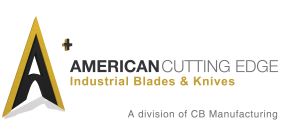Maintaining peak wood chipper performance requires knives that are sharp, balanced, and well-maintained. Proper wood chipper blade maintenance will extend the life of your wood chipper and improve the quality of your output.
Often, operators consider wood chipper blades to be a disposable item. However, wood chipper knives can and should be sharpened to maintain the integrity of the cutting surface. It is a common misconception to believe that precision sharpening requires too much effort or is too costly. As a result, wood chipper operators often throw away blades or utilize imprecise sharpening methods.
However, when sharpened correctly, wood chipper knives are restored to like-new condition for less than the cost of purchasing new blades. Wood chipper knives can be sharpened several times at a price that is 30 percent less than the cost of buying new blades.
Are Your Wood Chipper Blades Dull?
Irregular wood chips are a sign of dull wood chipper blades. Dull wood chipper blades shred and pull the wood apart instead of cutting it, creating poor quality wood chips, and regrinds. In addition to producing sub-par wood chips, dull wood chipper knives increase the strain on the wood chipper engine. It takes more energy to force a dull blade through a piece of wood than a sharp blade. When wood chipper knives are dull, the wood chipper will be louder and will require more horsepower. Over time, this can lead to premature engine failures.
Importance of Precision Sharpening
A common mistake is to assume that wood chipper blades can be sharpened effectively without precision equipment. Using a hand sharpening tool, bench grinder, or local general machine shop to sharpen knives creates many inconsistencies on the cutting edge and results in varying geometries.
Within the wood chipper, there is a designated space between the anvil (bed) and the knife. This space must be maintained throughout the length of the knife, from edge to edge. If a knife is not precision sharpened, the material is forced through specific points on the knife, the knife wears unevenly, and the wood chipper produces inconsistent chips.
Additionally, a seated wood chipper knife must maintain an exact level of squareness and flatness, any deviation outside of the set tolerances can interfere with the balance of the knife. When the balance of the knife is off, only a portion of the blade may be coming in contact with the wood. Precision sharpening of entire knife sets, instead of just one or two blades, ensures that these tolerances are maintained throughout the machine.
Wood chipper knives are manufactured to precise, specific tolerances based on the specifications of the wood chipper, the cutting material, and the knife manufacturer. These tight tolerances must be maintained to within five- to ten-thousandths of an inch to achieve optimum wood chipper performance. Tolerances this tight are impossible to keep without precision sharpening equipment.
When blade tolerances are not maintained, undue stress is placed on the wood chipper engine. Within the wood chipper, the blades are spinning at a high rate of speed, from 500 to 1000 RPM. When the knife tolerances are not maintained, there is additional stress on the rotor, belts, motor, and housing, which contributes to premature failures, wear, and increased machine downtime. In extreme cases, the wood chipper can come off the ground, or the blades can become unseated and break through the housing. When a wood chipper failure occurs, the results can range from severely damaging the equipment to the death or serious injury of operators and other workers in the vicinity.
How to Correctly Sharpen Wood Chipper Blades
Precision knife sharpening requires precision equipment. Sharpening programs, like those provided through American Cutting Edge, ensure that wood chipper blades maintain the sharpest cutting edge without exposing the knife to high temperatures (which damages the blade) or compromising the blades exact tolerances. This ensures that both your knives and your wood chipper are always operating at peak performance. It also provides you with more consistent chips, fewer blade changes, and increased machine up-time.
Your wood chipper knives are a crucial part of your business. Maintaining precise tolerances and sharp cutting edges ensures the safety of your team, the quality of your product, and the longevity of your equipment. Develop a sharpening schedule that utilizes a professional, precision sharpener and ensures that you always have precisely-sharpened wood chipper knives available.





